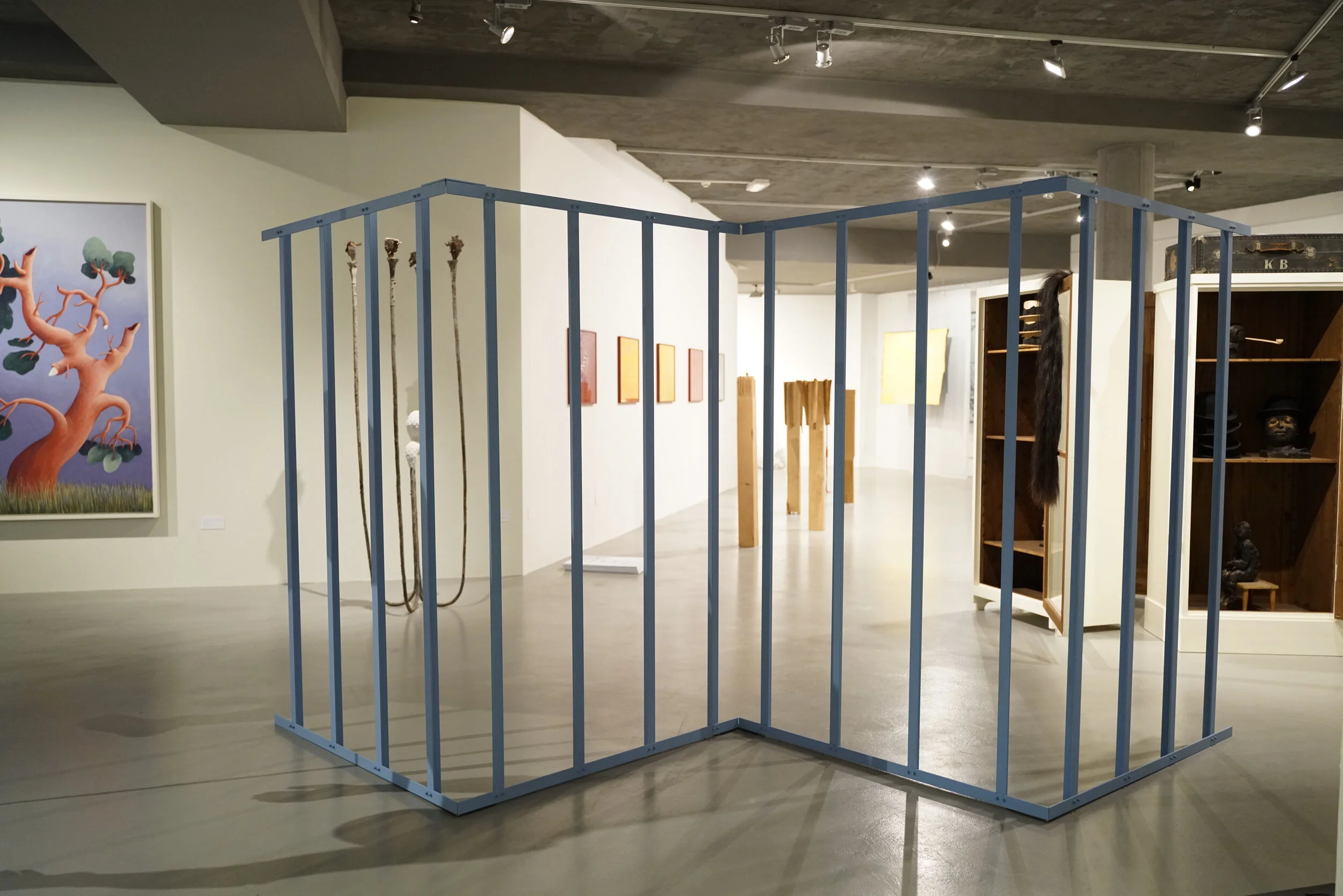
Paolo Icaro
*1936, Italy
lives in and works in Tavullia, Italy
EN
The artistic practice of Paolo Icaro (*1936, Italy) has its roots in the 60s and 70s. After an initial approach to sculpture in the studio of Umberto Mastroianni in Turin, in the early 1960s he moved to Rome, then departing in 1966 for New York, where he resided until 1968. While in America, he developed the “Forme di spazio” (Forms of Space, 1967), later renamed “Gabbie” (Cages), structures of metal sections in which sculpture, rather than occupying space, became a site, the origin of space. In the 1960s and 1970s Icaro took part in major events of the international art avant-garde, like the first exhibitions of Arte Povera, and he was invited by Harald Szeemann to participate in the legendary exhibition “When Attitudes Become Form”,held at Kunsthalle Bern in 1969.
Icaro explores the material language by questioning, building and deconstructing it. He pushes his works to the limits of sculpture, in search of a new creative grammar. “By studying this kind of ‘cages’,” he says, “that imprisoned air, sky and clouds, I noticed the way in which few lines in space were enough to create a primary structure. From this experience came the idea of building ‘traps’ that would capture space and distinguish it from the atmospheric structure.”
On the occasion of the Biennale Gherdëina 7, Paolo Icaro presents his iconic “space traps” sculptures, which, in a unique and disturbing way, express the essence of this very particular moment of a forced social distance, of a seclusion in the private spaces of one‘s own home, highlighting the reduced movements and meetings that happen in such spaces.
IT
La pratica artistica di Paolo Icaro (*1936, Italia) affonda le sue radici negli anni ‘60 e ‘70. Dopo un primo approccio alla scultura a Torino, si trasferisce a Roma, per poi partire nel 1966 per New York, dove risiede fino al 1968. In America si sviluppano le “Forme di spazio” (1967), poi ribattezzate “Gabbie”, strutture di sezioni metalliche in cui la scultura, più che occupare lo spazio, diventa un luogo, l’origine dello spazio. Negli anni Sessanta e Settanta Icaro partecipa ai grandi eventi dell’avanguardia artistica internazionale, come le prime mostre dell’Arte Povera, e viene invitato da Harald Szeemann a far parte della leggendaria mostra “When Attitudes Become Form”, tenutasi nel 1969 alla Kunsthalle Bern.
Icaro esplora il linguaggio materiale interrogandolo, costruendolo e decostruendolo. Spinge le sue opere ai limiti della scultura, alla ricerca di una nuova grammatica creativa. “Studiando questo tipo di ‘gabbie’ che imprigionavano l’aria, il cielo e le nuvole, ho notato il modo in cui poche linee nello spazio erano sufficienti a creare una struttura primaria. Da questa esperienza è nata l’idea di costruire ‘trappole’ che catturassero lo spazio e lo distinguessero da quello atmosferico”.
Per la Biennale Gherdëina 7, Paolo Icaro presenta le sue iconiche sculture ‘trappole spaziali’ che, in modo unico e inquietante, esprimono l’essenza di questo momento di distanziamento fisico forzato e di chiusura all’interno degli spazi privati delle proprie abitazioni, evidenziando dall’altro lato quei movimenti minimi e quegli incontri quotidiani che svolgiamo ogni giorno nelle nostre case e a cui spesso non prestiamo più attenzione.
DE
Die künstlerische Praxis von Paolo Icaro (*1936, Italien) hat ihre Wurzeln in den 1960er und 1970er Jahren. Nach einer ersten Annäherung an die Bildhauerei im Atelier von Umberto Mastroianni in Turin zog er Anfang der 1960er Jahre nach Rom und ging 1966 nach New York, wo er bis 1968 lebte. In Amerika entwickelten er die „Forme di spazio“ (Formen des Raumes, 1967), die später in „Gabbie“ (Käfige) umbenannt wurden, bestehend aus Metallprofilen, in denen die Skulptur, anstatt den Raum zu besetzen, zum Ort, zum Ursprung des Raumes wurde. In den 1960er und 1970er Jahren nahm Icaro an wichtigen Ereignissen der internationalen Kunstavantgarde teil, wie den ersten Ausstellungen der Arte Povera, und er wurde von Harald Szeemann eingeladen, an der legendären Ausstellung „When Attitudes Become Form“ teilzunehmen, die 1969 in der Kunsthalle Bern stattfand.
Icaro erforscht die Materialsprache, indem er sie hinterfragt, aufbaut und dekonstruiert. Auf der Suche nach einer neuen kreativen Grammatik stößt er mit seinen Werken an die Grenzen der Skulptur. “Beim Studium dieser Art von „Käfigen“ - sagt er - „die Luft, Himmel und Wolken einschließen, fiel mir auf, wie wenige Linien im Raum ausreichen, um eine Primärstruktur zu schaffen. Aus dieser Erfahrung entstand die Idee, ‚Fallen‘ zu bauen, die den Raum einfangen und ihn von der atmosphärischen Struktur unterscheiden würden.“
Zur Biennale Gherdëina 7 werden Paolo Icaro‘s ikonische „Raumfallen“ - Skulpturen präsentiert, die auf einzigartige und verstörende Weise das Wesen dieses ganz besonderen Moments einer erzwungenen sozialen Distanz, einer Abschottung in den privaten Räumen der eigenen vier Wände zum Ausdruck bringen und die reduzierten Bewegungen und Begegnungen deutlich machen, die in solchen Räumen stattfinden.


